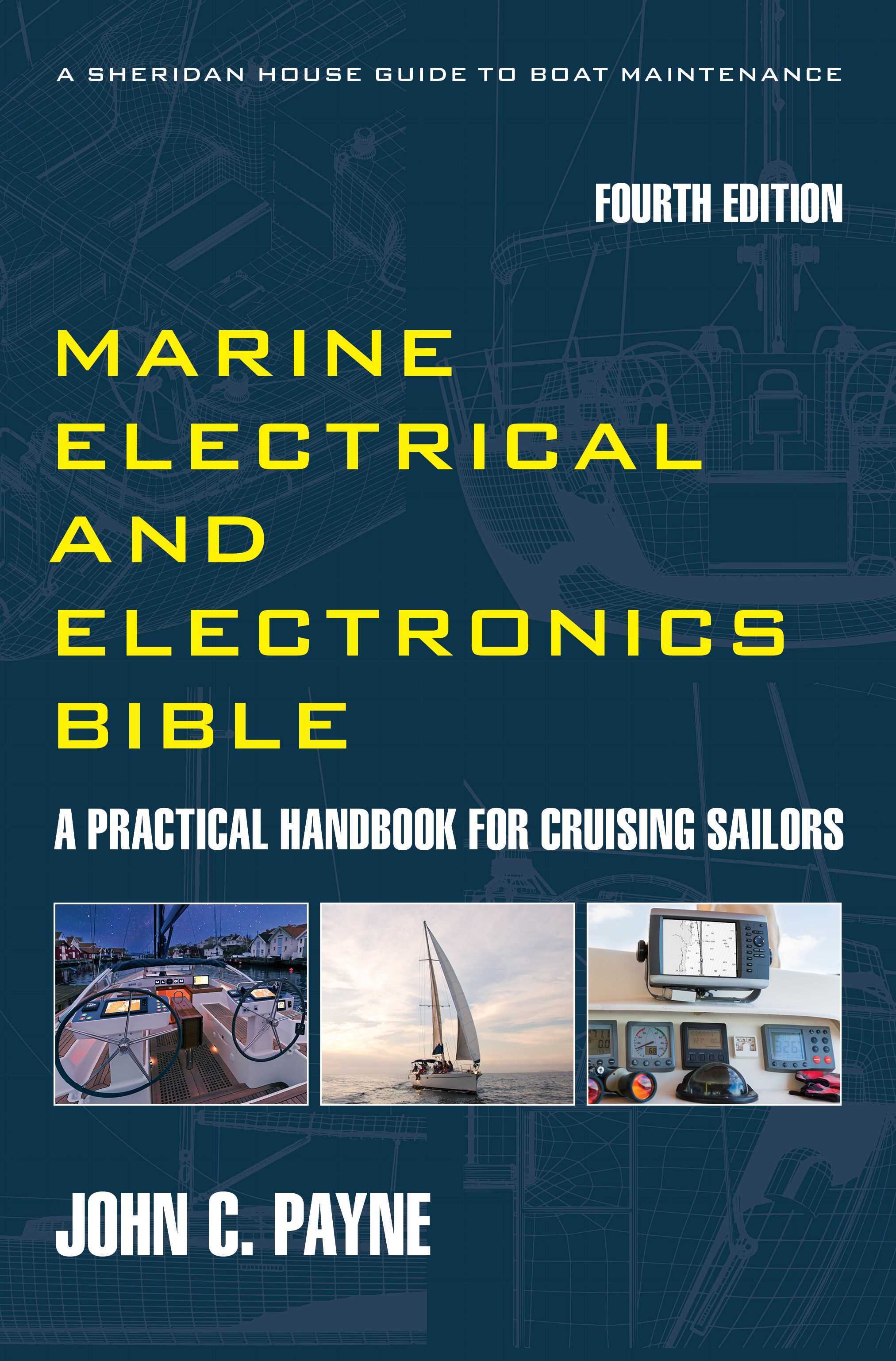Yacht electrical systems
When you buy a boat, consider the yacht electrical systems as your priority concern. If you decide to live on a boat and go cruising the first thing you need is to acquire some basic electricals skills and knowledge. Even if you live on a marina or do short cruises it is going to cost you a lot of hard earned cash to hire marine electricians and you may wait days to weeks. Once you are away your very safety depends on understanding your boat electrical system and how to troubleshoot it.
Yacht electrical systems can be complex and often made unnecessarily complicated, simple is better. The complexity of a marine electrical system and installation varies by boat type, boat size and often how big the actual budget allows it to become. In the end, the basic underlying principles are much the same regardless of which boat type you buy
The 4th Edition of the Marine Electrical Electronics Bible Get your copy and start becoming self sufficient and save money on expensive technician callouts.Problems always arise when boat and marine electrics systems are not cared for, badly maintained, or have undocumented changes done by the boat owner before you. Most yacht electrical systems are a 12 volt system. And over a period of many years we have had 24 volt system, 36 volt systems and we are rapidly adopting 48 volt systems and this will impact boat electrical designs, from battery technology and charging to powering different voltage devices and equipment.
The average liveaboard cruising yacht, and most any other boat type is now very high technology, with almost everything having electronic control circuits and monitoring imbedded into the circuits. The electronics and computer technology age has taken over with many boats now having boat electrics systems that include smart battery chargers, smart alternator regulators and smart battery switches, smart marine electronics transducers and systems that have smart phone connectivity. Then we have touchpad electronic switch panels and microprocessor controlled inverters along with electronic LED lighting, smart instrument networks, multi-function terminals. Of course, they need to have a boat electrical system and a reliable boat wiring system to support it all.
Yacht Electrical Systems
Information
If you want to know more about your yacht electrical systems why not invest in a copy of my book the Marine Electrical and Electronics Bible, with the new 4th Edition coming out. Click on the link to see the contents of the latest edition. Now in its 4th Edition and including complete boat systems information and practical advice about boat systems and all you need to know about marine electrics and electronics. Whether you have a new cruising boat or are buying a used sail boat, adding a boat accessory or upgrading the system, the basic marine electrical systems rules remain the same. The electrical power system required to supply equipment is usually a misunderstood subject, which include batteries, battery charging and alternative energy charging systems, and it is the foundation for reliable equipment operations and is covered elsewhere.
I want to change the dangerous illusion that boat electrics and vehicle systems are similar. As we all know, there are no 24 hour road services offshore, and safety is the prime factor, and this depends on good systems design and installation. Whether it is in France, England, Netherlands, Canada, Australia, New Zealand or the United States, the same boat electrical problems are found, and the boat forums show that clearly.
What are the Yacht Electrical
Systems Standards?
Small boat and yacht electrical systems should be installed as far as practicable to comply with one of the principal standards or recommendations in use. Most boat electrical standards are similar or overlap although some may ask for higher standards on particular systems than others. You should consider any of the standards as the minimum level required for marine electrical installations. These include American Boat and Yacht Council (ABYC). Standards and Recommended Practices for Small Craft. The European Recreational Craft Directive (UK and Europe) and the
The trend by some to treat small boat electrics as auto systems finished a long ago. Rules and regulations have to cover a wide variety of boat types, construction and materials, so there is no neat and precise fit and when looking at each particular boat installation, context is everything. Many boats have legacy electrical systems, with remnants of older installations that can be decades of additions and modifications. Sometimes it is easier and more practical to rip the old system out and start again which is what I have just done on my own boat. Even that is a challenge for me as well.
Yacht electrical systems made
simple
Yacht electrical systems include several primary elements. First there is the actual boat wiring or the wiring loom, which connects all the devices and equipment to the switch panel. The boat switch panels incorporate all the circuit breakers, fuses and control switches along with meters such as the voltmeter and ammeter. Then we have boat lighting and boat navigation lights which have a range of requirements for consideration.
While these are all DC boat electrics systems, we also have the issue of shore power, along with other AC power systems that include boat inverters, generators and so on. Underlying all of that is the actual installation of the wires and cables, and how to install them so as to remain reliable and maintain the mechanical integrity required. The acronym to observe with any boat wiring is the KISS principle. It is astounding and hard to understand why people with absolutely no knowledge of electrical systems experiment with the wiring on their boats. It usually violates most rules and recommendations, accepted work practices and is grossly over complicated. Yacht electrical systems are critical to your safety. Quality systems equal reliability and safety.
